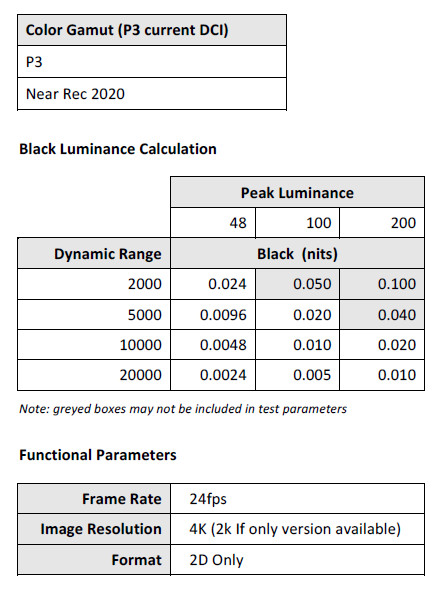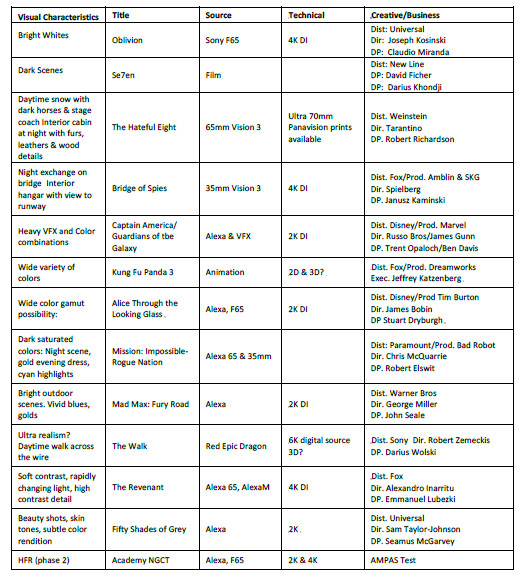Cinema technology is advancing rapidly including higher contrast, wider colors and higher frame rates (as seen in yesterday’s Display Daily – Ang Lee Shows the Future of Cinema Display). Solutions offering a range of these parameters are entering the market and will evolve. But from a creative point of view, where do these technical improvements have their limits in terms of human perception and for storytelling?

For example, are projectors with a million-to-one contrast ratio needed, if normal lighting and reflections in the cinema reduce this level dramatically? What is a practical black level? How about peak luminance? What is the best level for dark-adapted viewers? With color gamut, BT.2020 is the new UHD specification. Is this an achievable goal for next generation cinemas with realistic tolerances? What is a practical gamut from a creative point of view?
These and many other questions are among those that the Technology Committee of the American Society of Cinematographers (ASC) wants to address with a new study. As part of this, the Next Generation Cinema Display (NGCD) subcommittee has now issued a test plan with the goal of soliciting individuals and organizations to help undertake testing and evaluation. The NGCD subcommittee is co-chaired by Michael Karagosian, Eric Rodli, and Steve Schklair.
The plan is called the “Cinema Display Evaluation Plan and Test Protocol,” and it defines a method for the visual evaluation of parameters that characterize next generation cinema projection and active screens. The document represents the first step towards the goal of identifying where value is created from the filmmaker’s point-of-view. Anyone interested in seeing the details can download it HERE.
Phase one of the plan focuses on understanding how different parameter values impact the perception of image quality, establishing a baseline for further testing. The first image below from the test plan shows the matrix of content that the groups wants to master and present in an appropriate venue. The second image suggests some representative content that is being considered for evaluation.
Expert ASC members will be asked to help produce and then evaluate the content to gain a better understanding of the value of these parameters from both a human perception and a story telling point of view. These results will then help to influence technical advancements and standards formation in the future.
Phase 2 of the plan will also start to look at the impact of higher frame rates. This is particularly relevant with the debut this fall of Ang Lee’s new movie, “Billy Lynn’s Long Halftime Walk”, which is being produced in HDR, 4K, 3D and 120 fps.


The ASC Technology Committee is chaired by Curtis Clark, ASC, said, “Addressing advanced displays and projection is the next step toward leading the creative and technical community in promoting enhanced digital cinema presentations. We look forward to collaborating with the industry to achieve this important objective.” – CC

